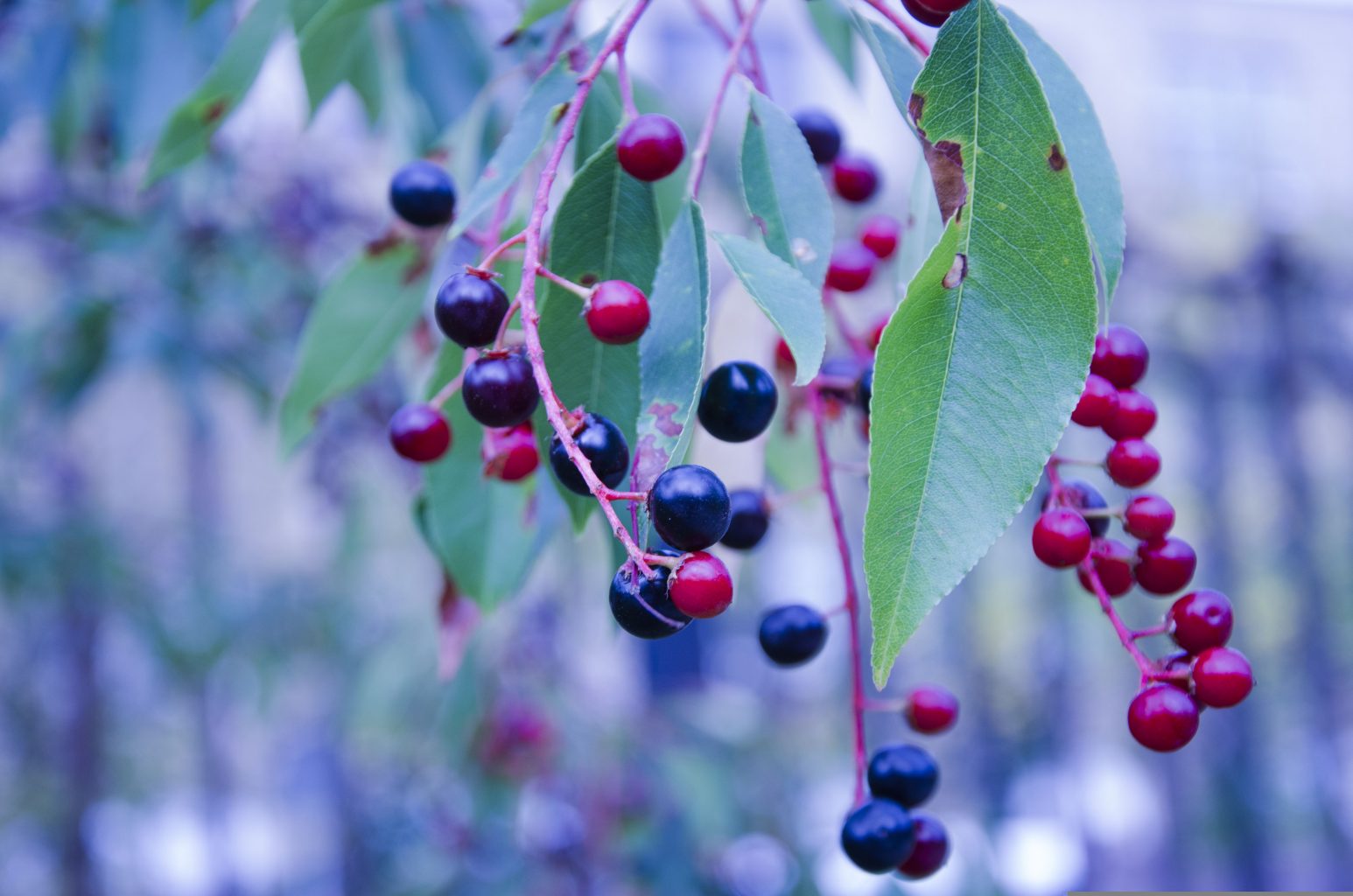
Some may think the name Huckleberry is a made-up “book or television” word but it really is the name of several plants within the family Ericaceae. The Ericaceae family, more commonly known as heath or heather, consists of flowering plants. They are a very large grouping with well over 4,200 species, making them the 14th most “species-rich” family of flowering plants in the world.
Huckleberry grows wild, they love well-drained acidic soil and, although they can survive in dappled light, they really need the full sun to produce their fruit. Throughout North America, there are 3 main species of huckleberry: 2 from the genus Vaccinium and 1 from the genus Gaylussacia.
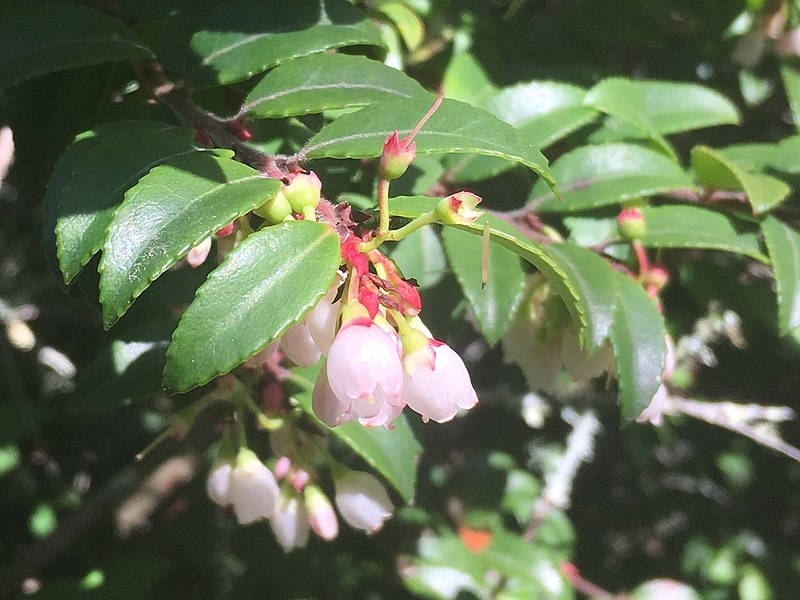
Coastal Evergreen Huckleberry: Vaccinium ovatum, grows along the Pacific coast. Sometimes they’re referred to as the Winter Huckleberry because the berries are mostly harvested late in the year. This is when they are said to taste better because the fruit has experienced frost. This Coastal variety produces a dainty blue-violet berry with a little thicker skin and a good sugar/acid balance. The bushes can grow in great thickets, reaching heights of up to 10 feet.
Mountain Huckleberry: (Vaccinium membranaceum/globare complex). This deciduous bush has lance-shaped leaves and is usually found from 3,000-7,000-foot elevations. When these bushes are productive, they can range from just under a foot to about 4 feet tall. The berries are fat, juicy and tend to a red-violet color.
The Eastern Huckleberry, Gaylussacia species (the Huckleberry Finn version) often intermingles with low bush blueberries. Unlike Western huckleberries, they have 10 small seeds. These Huckleberry shrubs can be found throughout eastern North America, the Andes and mountain regions of south America. They are deciduous with simple oblong leaves. Their small urn-shaped flowers can be greenish, red, white or pinkish, sometimes solitary but more often clustered.
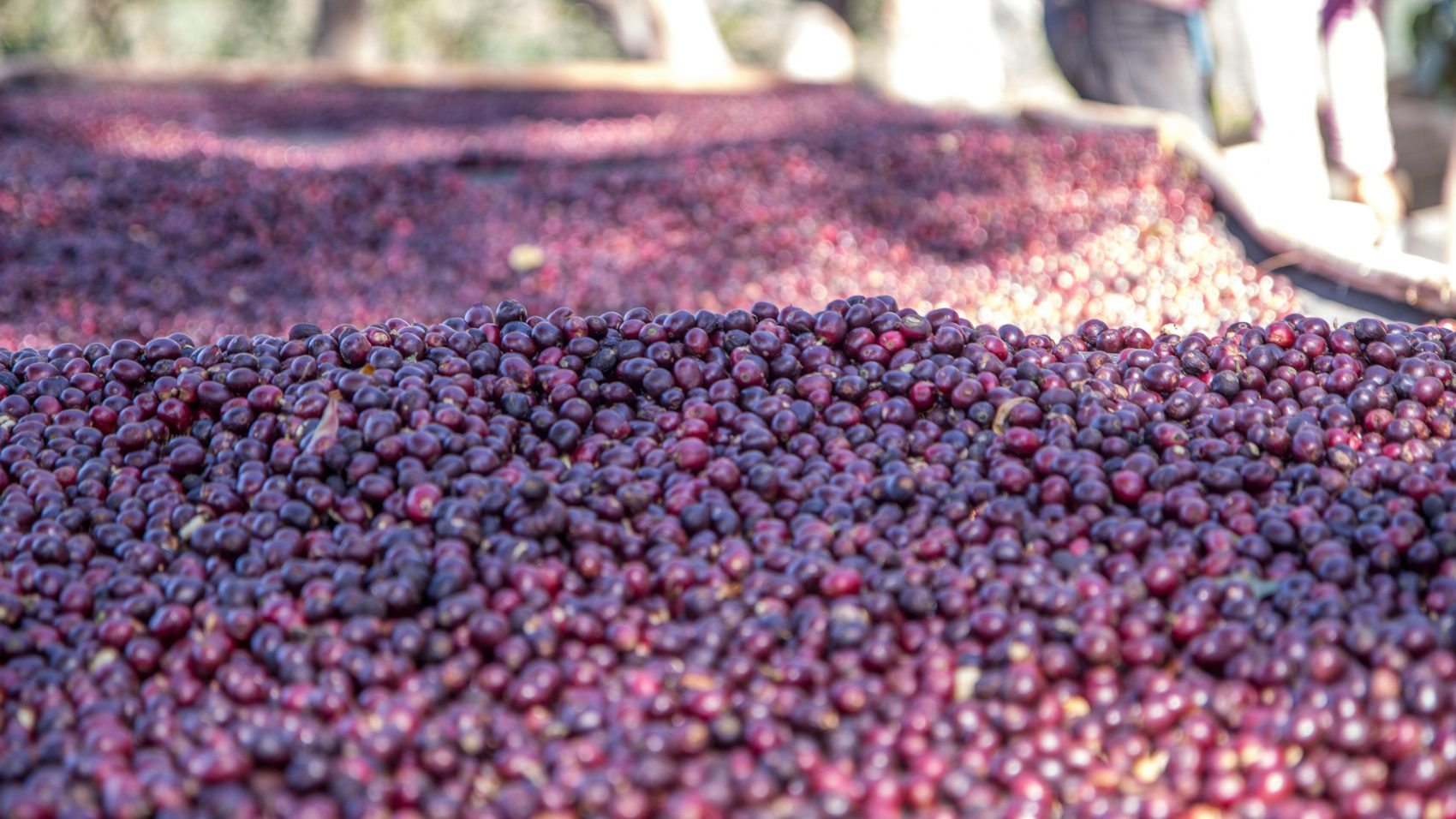
Smaller than a blueberry and sweeter than a cranberry, many believe that huckleberries are the best of both worlds. Although some have tried, there is no reliable method to cultivate huckleberries in mass. It is possible they need their native soil chemistry to be able to root and produce berries. On the bright side, this lends a magical quality to the fruit – tempting you to go out and find them in their own habitat.
In the U.S. there are several states which have their own species of huckleberries growing and each one “knows their type is superior”. These states take their huckleberries seriously – the huckleberry is the state fruit of both Idaho and Montana.
One thing common to each of the species is their distinctive crown-shaped mark on the bottom of the berry – much like you see on blueberries. The difference it though, that huckleberries don’t usually have that “frosted bloom” on the skin of the berry. They also tend to a more intense flavor with a juicier interior.
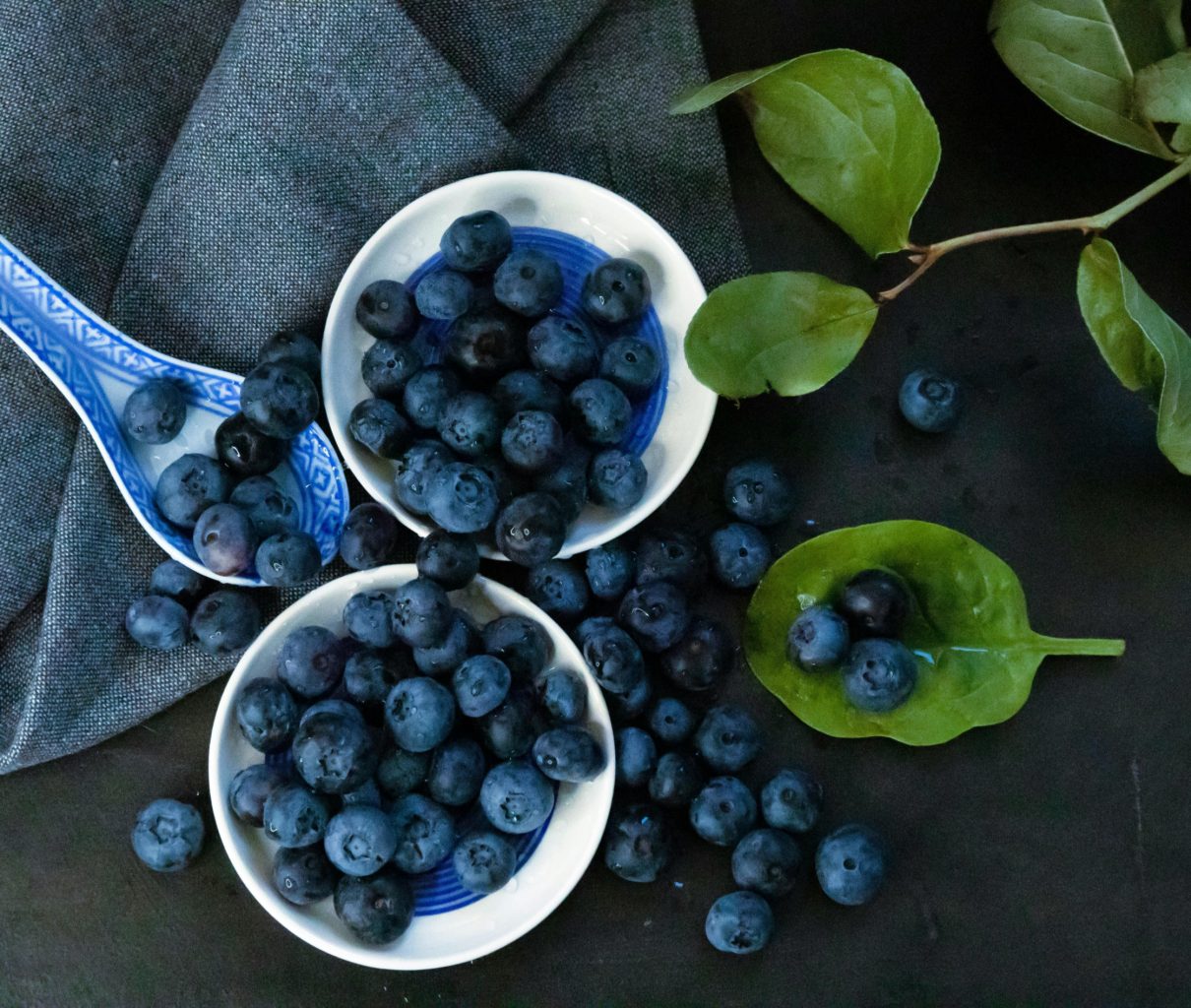
The Evergreen Huckleberry was an important traditional food of the British Columbia Indigenous Peoples. Kuhnlein and Turner (1991) wrote that the Sechelt, Comox, Straits, Halkomelem, Lower Niaka’pamux Salish and Nuu-chah-nuth of Vancouver Island and the west coast all harvested these berries. They were traditionally eaten fresh, usually with oil but also sometimes sun- or smoke-dried, mashed and pressed into cakes or wrapped in leaves or bark. Even today certain huckleberry picking grounds in the U.S. National Forests are reserved for tribal use.
Huckleberries are still in demand for their unique taste in pies, pancakes, jams, milkshakes and muffins.
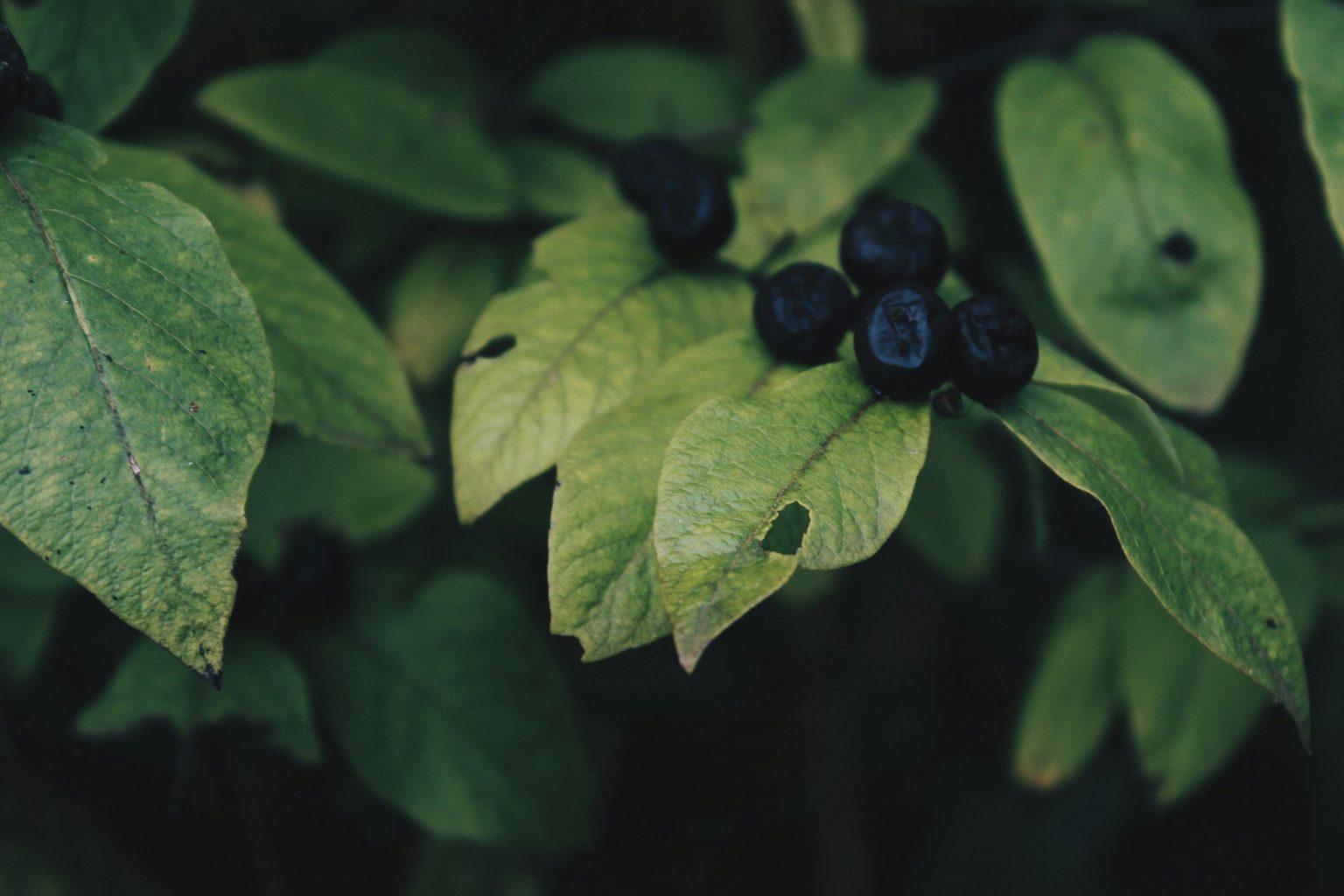
Throughout North America these small, round berries have been growing wild and perhaps this is the reason the word “huckleberry” has been used in so many ways dating back to the 1800s. Because huckleberries are so small, they were often co-opted as a slang term to refer to something or someone as “small, unimportant or insignificant”. Scholars thought Mark Twain used this implication as he named his character “Huckleberry Finn” (from the 1874 book ‘Adventures of Tom Sawyer’ and the 1884 book ‘Adventures of Huckleberry Finn’), casting “Huck” Finn as a small boy situated in a lower class than his companion Tom Sawyer.
The phrase “a huckleberry over my persimmon” is an old one used when something was “somewhat beyond my abilities”. “I’m your huckleberry” was used to convey, “You’ve chosen the right person” or as a way to express affection.
In the 19th century a “huckleberry” was used to refer a person of significance or someone who was particularly nice. And then there is (for those old enough to remember) Huckleberry Hound, the cartoon Bluetick Coonhound created in 1958 by Hanna-Barbera.

The Black Huckleberry, showing resilience and the ability to thrive in challenging conditions is aligned with the symbolism of perseverance and determination. Aboriginal cultures looked to its endurance and protective abilities, believing it would bring them strength and vitality.
The Red Huckleberry is not as rooted in global symbolism as some foliage, but it has come to stand for adaptability and resilience in a world that is constantly changing.
One small company specializing in jam writes: “Huckleberries, nature’s hidden treasure, continue to captivate the hearts and palates of those who seek them out. The labor-intensive and environmentally sensitive process of foraging for huckleberries faces numerous challenges, leading to fewer foragers, higher prices, and a decreasing presence of huckleberry-containing products on the market.”
An unknowable mystery that some plant life is incredibly accessible while others, not so much?
